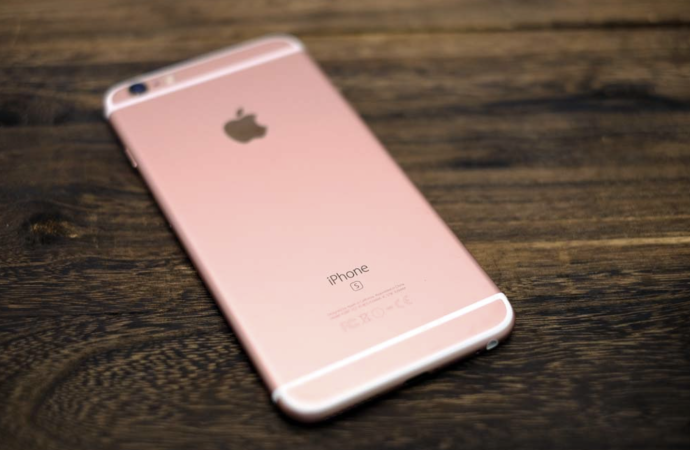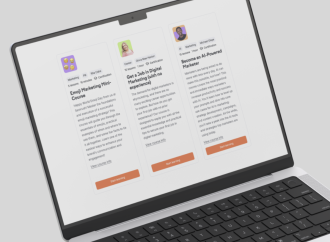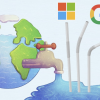The iPhone stands out as one of the most significant technological innovations of the 21st century. Its history is marked by a constant drive for innovation, spearheaded by Apple’s vision to transform how we communicate and interact with technology. Before we get into the best iPhones ever made, it’s worth taking a moment to look

The iPhone stands out as one of the most significant technological innovations of the 21st century. Its history is marked by a constant drive for innovation, spearheaded by Apple’s vision to transform how we communicate and interact with technology. Before we get into the best iPhones ever made, it’s worth taking a moment to look back at its origins, major milestones, and the cultural impact it has had.
The Early Days: How the iPhone Came to Life
The iPhone’s journey started with a straightforward goal: to create a device that combined a phone, an iPod, and an internet communicator all in one. At the time, most mobile phones were clunky, with physical keyboards and small screens. Apple, led by Steve Jobs, felt they could do better.
Work began on the project in 2004 under the secretive name “Project Purple.” The team of engineers worked in stealth to bring what would become a game-changing device to life. On January 9, 2007, Steve Jobs introduced the first iPhone at the Macworld Conference, making a bold statement: “Every once in a while, a revolutionary product comes along that changes everything.”
Released on June 29, 2007, the first iPhone was priced at $499 for the 4GB model and $599 for the 8GB version. It featured a 3.5-inch touchscreen, no physical keyboard, and a 2-megapixel camera. Despite lacking 3G connectivity and being on a slower EDGE network, Apple sold 6.1 million units of the first iPhone, marking a major shift in the mobile phone industry.
How the iPhone Changed the Mobile Market
Though not the first smartphone, the iPhone was the first to successfully integrate multiple technologies into one simple-to-use device. Before the iPhone, brands like Nokia, BlackBerry, and Motorola dominated the mobile market with phones that had small screens, physical keyboards, and limited internet functions.
The iPhone revolutionized the market with its multi-touch interface, allowing users to interact with the device in entirely new ways, like pinch-to-zoom. Its lack of a physical keyboard gave it a larger screen that made browsing and media consumption a far better experience.
The iPhone continued to evolve with the App Store, launched in 2008. This allowed developers to create apps for iOS, offering everything from games to tools for productivity. By 2010, Apple had sold 73.5 million iPhones globally, cementing its position as the world’s leading smartphone manufacturer. Other companies, like Samsung and Google, soon shifted their focus to touch-based operating systems and apps, trying to emulate Apple’s success.
The iPhone’s Broader Impact
The iPhone wasn’t just a success in terms of sales; it also had a lasting cultural impact. It ushered in the era of modern smartphones, with features we now take for granted like full web browsing, GPS navigation, and high-quality cameras becoming mainstream thanks to the iPhone.
- Mobile Internet: The iPhone made mobile internet not only accessible but enjoyable. By 2013, mobile internet usage surpassed desktop usage, with the iPhone playing a key role in that shift.
- Photography: The iPhone transformed mobile photography. In 2017, it became the most used camera on platforms like Flickr, surpassing even professional DSLRs.
- Social Media: Thanks to its easy-to-use camera and seamless app integration, the iPhone helped social media platforms like Instagram and Snapchat thrive, giving users a powerful tool to share photos and videos instantly.
The iPhone also impacted other industries:
- Health: The Apple Health app and Apple Watch have made the iPhone central to personal health tracking, including features like step counting and heart rate monitoring.
- Retail: According to a 2023 Statista survey, 47% of U.S. smartphone users use iPhones for online shopping, highlighting the device’s role in the e-commerce boom.
Sales and Market Domination
Apple’s iPhone sales numbers show its undeniable dominance in the smartphone market:
- By 2022, cumulative iPhone sales surpassed 2.2 billion units, making it one of the top-selling consumer products ever.
- In 2020, the iPhone accounted for nearly half (49.7%) of Apple’s total revenue, proving just how important the device is to Apple’s overall business.
- In Q4 2022, Apple shipped 72.3 million iPhones, claiming 23.1% of the global smartphone market share.
The iPhone’s global popularity spans markets like the U.S., China, Japan, and Europe, with 57% of the smartphone market in the U.S. held by the iPhone.
Key Innovations Over the Years
The iPhone has introduced several groundbreaking features over the years:
- 2008: The iPhone 3G added 3G connectivity and the App Store, greatly expanding the iPhone’s capabilities.
- 2010: The iPhone 4 introduced Retina Display and the front-facing camera, sparking FaceTime and selfie culture.
- 2013: The iPhone 5S brought Touch ID for easy unlocking and secure payments.
- 2017: The iPhone X got rid of the home button, introduced Face ID, and set the standard for modern smartphones with a nearly bezel-less OLED display.
- 2020: The iPhone 12 brought 5G connectivity, allowing for faster data speeds worldwide.
iPhone and Sustainability
Apple has made strides toward sustainability with the iPhone, announcing in 2020 that it aims to become carbon neutral across its supply chain by 2030. Recent models, such as the iPhone 15 and 16, are made with recycled materials, including aluminum and rare earth elements. Packaging has also become more eco-friendly, reducing plastic waste.
The Competitive Landscape
Apple faces stiff competition from companies like Samsung, Google, and Xiaomi. Yet, the iPhone continues to maintain its market share due to its strong brand loyalty, superior ecosystem, and constant innovation.
Apple’s Strategic Moves
Apple’s ability to integrate hardware, software, and services seamlessly has been key to its success. The iPhone, along with services like iCloud, Apple Music, Apple Pay, and Apple TV+, forms a unified ecosystem that encourages customers to stick with Apple products. This strategy has helped Apple maintain high user retention rates, with a 2022 CIRP study finding that 90% of iPhone users stick with Apple when upgrading to a new phone.
The iPhone’s Legacy
The iPhone’s history is a story of innovation and cultural transformation. What started as a device combining a phone, an iPod, and an internet communicator has now become a cornerstone of modern technology.
Having explored its history, it’s time to take a look at the best iPhones ever released, ranked by surveys, reviews, and technical analysis.
Top 10 Best iPhones Ever Released
Here’s a list of the top 10 iPhones, ranked in reverse order:
- iPhone SE (2022)
Compact, affordable, A15 Bionic chip, classic design with a home button. - iPhone 6S
First iPhone with 3D Touch, reliable performance even after years. - iPhone 11 Pro Max
Triple-camera system, long-lasting battery. - iPhone 14
Crash Detection, Emergency SOS via Satellite, solid everyday camera. - iPhone 12 Pro Max
5G capability, enhanced camera system with LiDAR. - iPhone X
First with Face ID and OLED display, new design with the notch. - iPhone 13 Pro Max
120Hz ProMotion display, excellent battery and camera. - iPhone 15 Pro Max
Titanium build, Dynamic Island, best zoom camera on any iPhone. - iPhone 16 Pro
48MP cameras, 4K recording, new Camera Control button. - iPhone 16 Pro Max
Largest screen (6.9 inches), best battery, ultra-wide 48MP camera, and upcoming Apple Intelligence features.
The iPhone 16 Series
The iPhone 16 series, released in 2024, has taken things to the next level with several new features:
- Apple Intelligence: AI-powered feature that learns user habits to improve performance.
- Camera Control Button: A new physical button on the iPhone 16 Pro for easy camera mode switching.
- 48MP Ultra-Wide Camera: Available on iPhone 16 Pro and Pro Max, it enhances low-light photography and supports high-res 4K video recording.
- Dynamic Island: Replaces the traditional notch with an interactive area for better notifications and FaceTime.
- Larger Displays & Thinner Bezels: Pro models now have displays measuring 6.3 inches (Pro) and 6.9 inches (Pro Max).
- USB-C Port: For faster data transfer and broader accessory compatibility.
- A18 Pro Processor: Improved performance and power efficiency.
- Titanium Build: Lighter yet more durable for improved resistance to drops.
iPhone FAQs
- Who invented the iPhone?
The iPhone was invented by Apple Inc., under the leadership of Steve Jobs. - Who owns the iPhone?
Apple Inc. owns and develops the iPhone, holding patents for both the hardware and software. - Where is the iPhone made?
Designed in California, the iPhone is assembled by third-party contractors like Foxconn and Pegatron in China. - How long do iPhones last?
iPhones typically last 4-6 years, with Apple supporting updates for about 5 years. - What’s the best iPhone for photography?
The iPhone 16 Pro Max is currently the best for photography, featuring a 48MP camera and 4K video recording. - What is Dynamic Island?
Dynamic Island is an interactive feature replacing the notch, allowing for more immersive notifications and controls. - Does the iPhone have 5G?
Yes, since the iPhone 12, all iPhones support 5G for faster download and upload speeds. - How much does the iPhone 16 cost?
Prices start at $799 for the iPhone 16, $999 for the iPhone 16 Pro, and $1,099 for the iPhone 16 Pro Max. - Can you use an iPhone with Android apps?
No, iPhones use iOS and only support apps from the App Store, though some Android apps are available on iOS. - Can I charge my iPhone with any charger?
Newer iPhones with USB-C ports can be charged with any USB-C charger, though Apple-certified chargers provide optimal performance. Older iPhones use Lightning connectors.

















Leave a Comment
Your email address will not be published. Required fields are marked with *